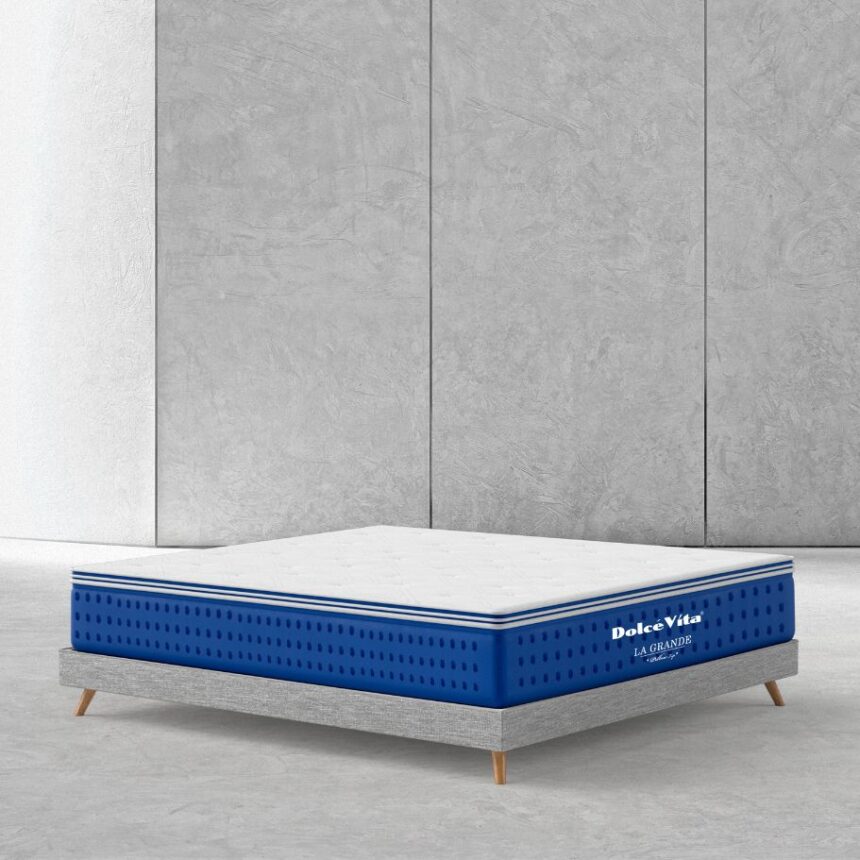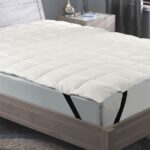Latex mattresses are classified as premium products. They have dense, springy body support. It can be compared to a very good spring block with 1000 springs on each bed. This is all due to the fact that the density of natural latex is 1.5-2 times higher than the density of high-quality polyurethane foam, and latex lasts about twice as long. Even a thin layer significantly increases the durability and service life of the mattress. It seems incredible, but this material was created by nature itself, of course, not without the help of scientists.
What Is Latex And Why Is It In A Mattress
Natural And Artificial Latex: What Is The Difference
Latex in a mattress can be natural or artificial. Natural is obtained from the sap of the Hevea tree, artificial is synthesized from polymers. In terms of sensations and features of support, both materials are similar, but the natural one wins in all characteristics (see the table above), but is inferior in price.
How Latex Is Obtained
Natural latex is made from the sap of an exotic tree, which is foamed and baked in molds. The output is something like a springy soufflé, where micropores serve as an analogue of hundreds of thousands of microsprings. Such a material adapts very well and distributes the load. And to increase air permeability, perforation is used.
Harvesting latex on a Hevea plantation is the first step to creating a natural mattress.
What Does Latex Give In A Mattress
Latex filler creates medium-stiff, high-quality orthopedic support for the back, balanced with good anatomical properties. The flexible porous structure springs perfectly and quickly restores its shape. It adjusts to the body, keeping its even position on the surface of the bed. This is important for those who want not only comfort in sleep, but also the preventive properties of the mattress are important to them.
The spine remains straight, and the body comfortably sinks in the load zones – this is how a solid block of latex with well-thought-out perforation works.
What Weight Are Latex Mattresses Designed For?
The strength and endurance of latex makes it a worthy option for sleepers weighing more than 90 kg or couples with a significant difference in weight. But the flexibility of latex foam is also suitable for those whose weight is less than 90 kg.
Latex Mattresses Are Versatile And Suitable For Any Weight, But:
- Up to 90 kg – you can take purely latex models.
- 90+ kg – it is better to combine with coconut or independent springs.
- 120+ kg – only reinforced spring blocks with natural latex without or with coconut coir.
What Is The Difference Between Latex And Polyurethane Foam And Memory
Unlike polyurethane foam, latex does not “sag” over time and restores its shape better. It is elastic, but not rigid. It differs from memory foam in that it does not react to heat – the support is maintained regardless of the temperature, and the return to shape occurs immediately, without “dips” and delays. Latex is more “lively” and springy, while memory is soft and viscous.
Pros And Cons Of Latex Mattresses
Pros
Anatomical and supportive.
- Latex has increased anatomicality, it springs perfectly and adapts to shapes. Mattresses based on it provide moderately soft or medium firm support, depending on the thickness of the layers and combinations with other materials.
- Good ventilation. Especially in models with perforations. The mattress “breathes” and does not accumulate moisture, which is important for people prone to sweating.
- Longevity. Natural latex lasts 10-15 years without losing its shape. It does not sag, does not crumble and retains elasticity longer than PU foam.
Cons
- Heavy. A full-size latex mattress weighs significantly more than usual. It is inconvenient to carry and turn it over.
- Not everyone feels good. To some, it seems too soft or “rubbery”. This is especially important if a person is used to a classic rigid support.
- Price. Natural latex is more expensive than polyurethane foam and synthetic analogues. Especially when it comes to a monolithic block.
Who Is A Latex Mattress Suitable For?
Elderly
Latex relieves the load from the joints well, does not squeeze and does not require effort when turning. The mattress is elastic, but not hard – it is easier to get up from it than from soft memory foam.
For Back Pain
If you need support for the spine without excessive rigidity, latex provides this due to the even distribution of weight. It is especially effective in combination with coconut coir or zonal perforation.
Those Who Sleep On Their Side
The material adjusts to the shoulders and hips, reducing pressure in these areas. This helps to avoid numbness and tension at night.
Who May Not Be Suitable
Those who like very firm mattresses may find latex too soft. Also, for people who are hot in their sleep, natural latex feels warm. In such cases, it is better to choose models with perforations or double-sided: with different finishes for summer and winter.
User Reviews And Impressions
What Is Praised
Most often – elasticity without rigidity, the absence of dips and silence during sleep. Latex does not creak, does not transmit movement and supports the body well. It is noted that the back is less tired, especially with prolonged sleep.
What Is Criticized
Some people find the mattress too heavy and bulky. There are complaints that it gets stuffy in the heat, especially if the cover does not breathe. Sometimes the feeling of latex does not immediately “go” – not everyone perceives it comfortably from the first day.
Conclusions on reviews
Latex mattresses appeal to those who are looking for stable and springy support without rigidity. But you need to choose carefully: not everyone feels good, and the price is above average.
How To Choose A Latex Mattress
Density And Thickness
The higher the density of latex, the stronger and stiffer it is. For daily sleep, a block of 14 cm and above is suitable. Thin models (5-7 cm) are more suitable as toppers.
Construction Type
Monolith is a solid block of latex: elastic, silent, durable:
Combined – with coconut or other layers – give different sides in hardness:
There are also models with independent springs and latex on top – they are lighter and more versatile in feel:
Natural Or Artificial
Natural latex is more durable, more elastic and more expensive. Artificial is cheaper, but loses its shape faster. Sometimes a mixed composition is used – this is a compromise between price and service life:
Comparison With Other Materials
In terms of elasticity, latex is closer to springs, but it works quieter. Unlike memory, it does not fall through and does not heat up. Compared to polyurethane foam, it is more expensive, but more reliable. It is stronger and more anatomical, especially with long-term use.
Scientists Checked: Which Mattress Is Easier To Sleep On – Latex Or Foam
What Is This Study About?
Scientists from Singapore compared two types of mattresses – latex and polyurethane foam (PU foam). They wanted to understand which one puts less pressure on the body during sleep. To do this, people were asked to lie on each mattress, and special sensors measured the load on the back, shoulders and hips.
What Did You Find Out?
- A latex mattress creates less pressure on the body than PU foam.
- On latex, the load is distributed more evenly – especially in the hips and shoulders.
- This can mean less pain and discomfort, especially if you sleep on your side or suffer from back problems.
How Much Does A Latex Mattress Cost And What Does The Price Depend On
What Affects The Price
The cost is primarily influenced by the type of latex – whether it is natural or not. Mattresses with natural latex are really more expensive, especially compared to models made of simple polyurethane foam, which are often found in non-core stores with a price of about 10 thousand rubles for a standard height.
If you compare in terms of service life, the difference becomes clear: one latex mattress will easily last as long as two or three budget ones. As a result, frequent replacement of cheap models is more expensive. Latex is not the cheapest purchase, but it works for comfort and health in the future.
Why Is Polyurethane Foam More Expensive?
Natural latex is a difficult material to produce. It lasts longer, holds its shape better, does not sag and is designed for more weight of the user. Collecting the sap of the tree is also a difficult and costly process. Hence the difference in price.



